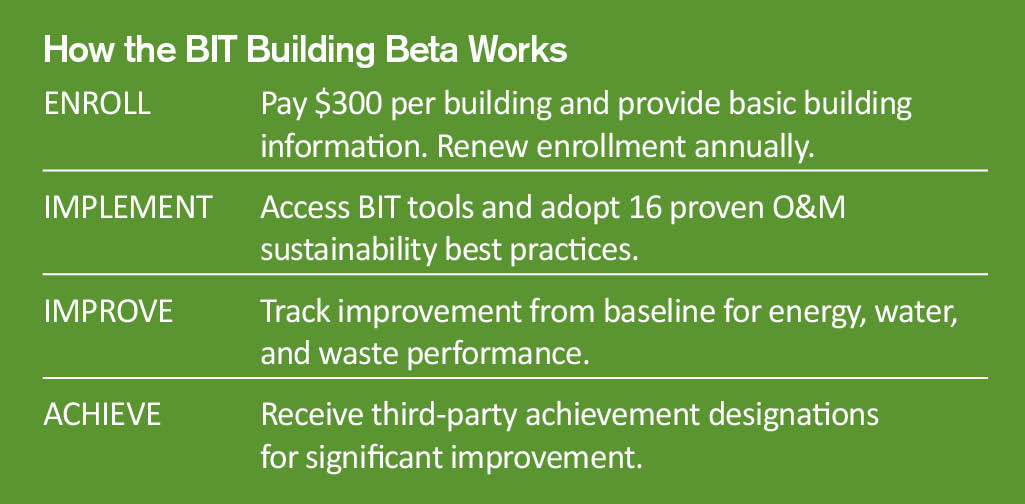Benchmarking: Opportunities for Finding Energy Efficiency
Part 2 of the 5-part Green Building Report
Two of the best, first opportunities for finding energy efficiency include:
• Simple tuning of your operations — Simple changes in how a building’s existing equipment is run can go a long way toward saving energy and money while improving occupant comfort. Review set points against actual needs and conditions to ferret out instances of overheating, overcooling, and overlighting. Night walks can be particularly useful to investigate problems with setpoints or equipment schedules. Learn about what is commonly found and how to approach a night walk from NEEA’s Better Bricks Building Night Walk Video Series.
• LED lighting upgrades — With nearly universal applicability and positive return on investment, LED lighting upgrades stand out as the most ubiquitously recommended energy conservation measure in energy audit reports. Aside from the energy savings, the long life of these lamps can dramatically reduce the time maintenance staff spend replacing bulbs. LEDs also make it easier to have good lighting quality than earlier lamp efficiency technologies. The Energy Trust of Oregon’s “Guide to new, energy-efficiency lighting technologies for your business” does a good job of providing information about lighting upgrades from both efficiency and light quality perspectives.
Getting Help With Benchmarking
As more building owners and facility managers consider efficiency upgrades, expect to see more efforts to translate macro-level data into first-blush improvement recommendations. One emerging example of this is the U.S. Department of Energy’s development of the Building Energy Asset Score (Asset Score) tool, which generates a simple rating of energy efficiency based on the physical and structural components of commercial and multifamily residential buildings. This voluntary tool is intended to be a companion to both energy audits and benchmarking based on consumption.
Just as more assessment tools are cropping up to support efficiency improvements, the world of financing is also rearranging around this growth area. These programs look to address some of the sticking points that prevent broader use of energy performance contracting or energy efficiency mortgages. This solves a key restraint to unleashing more energy efficiency projects, given that building owners and facility managers are not necessarily going to be enthusiastic about redirecting capital away from their core business priorities.
One new financing mechanism for energy efficiency projects that is gaining steam is Property-Assessed Clean Energy (PACE). This financing model allows local and state governments, when authorized by state law, to fund the initial costs of energy efficiency, and spreads repayment over many years without requiring debt payback upon building sale or refinance.
Another opportunity to help building owners and facility managers move from awareness to action is a) make it easy to understand which steps are most useful to take and how, and b) to offer meaningful forms of recognition to those who make significant improvement from their starting place.
The BIT Building Program (see “How The BIT Works” chart below) is a new initiative working to bring a set of well-vetted sustainability best practices to a broad audience. Though the program addresses more than just energy performance, it is intended to offer a positive way forward for benchmarked buildings that have been pegged as low or average performers. While LEED for O+M and Energy Star’s labeling program have done a commendable job in recognizing buildings performing in the top quartile, there are not well-utilized programs that recognize performance improvements in the remaining roughly 75 percent of buildings. Currently in beta, the program is working toward a full launch later in 2016.

As one example of a successful benchmarking ordinance, Chicago’s energy benchmarking and disclosure ordinance was passed in late 2013, and has enjoyed one of the most successful early implementation phases among large cities. With Year One compliance rates for other cities more typically landing in the 60 to 75 percent range, Chicago hit over 90 percent compliance rates in the first year of its reporting cycle when large buildings’ reports came due, even with the added requirement that properties have a third party verify the reported data once every three years. The second year welcomed the inclusion of midsize commercial buildings (those between 250,000 to 500,000 square feet) and multifamily properties over 250,0000 square feet, and the remaining buildings over 50,000 square feet will begin reporting in 2016.
Jenny Carney (jcarney@yrgxyz.com) is a principal of YR&G Sustainability Consultants. She manages the Chicago office and oversees project work related to LEED O+M. Carney is also chair of the Sustainable Sites Technical Advisory Group (TAG) for USGBC.
Email comments and questions to greg.zimmerman@tradepress.com.
Related Topics:

















